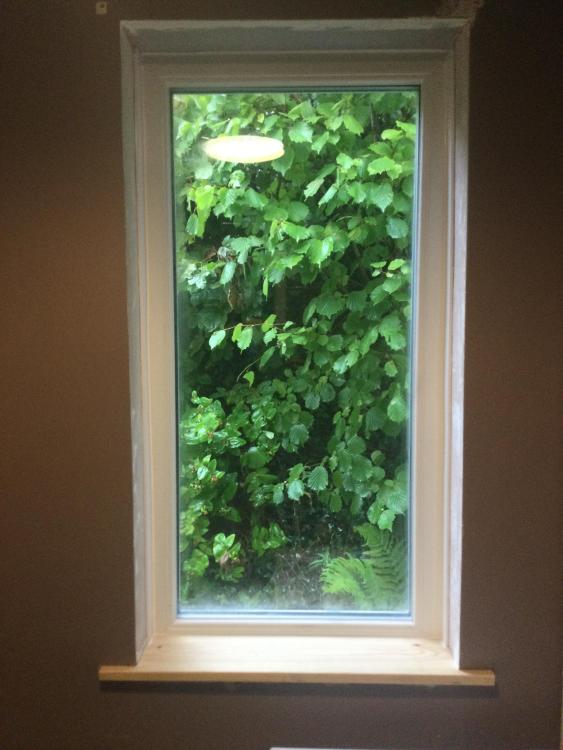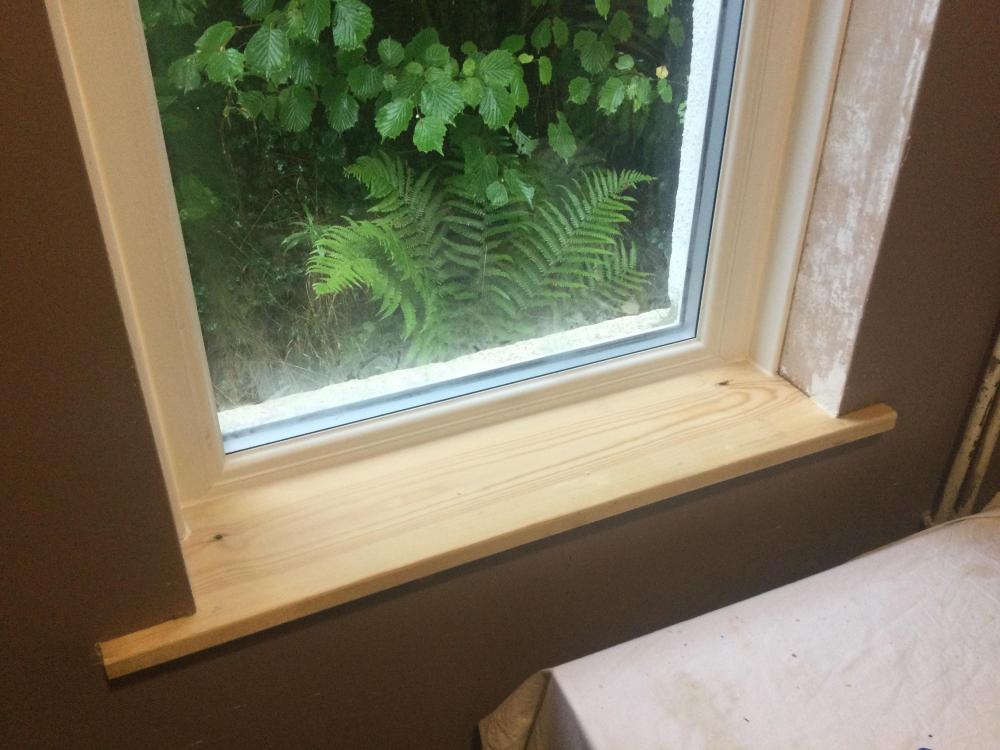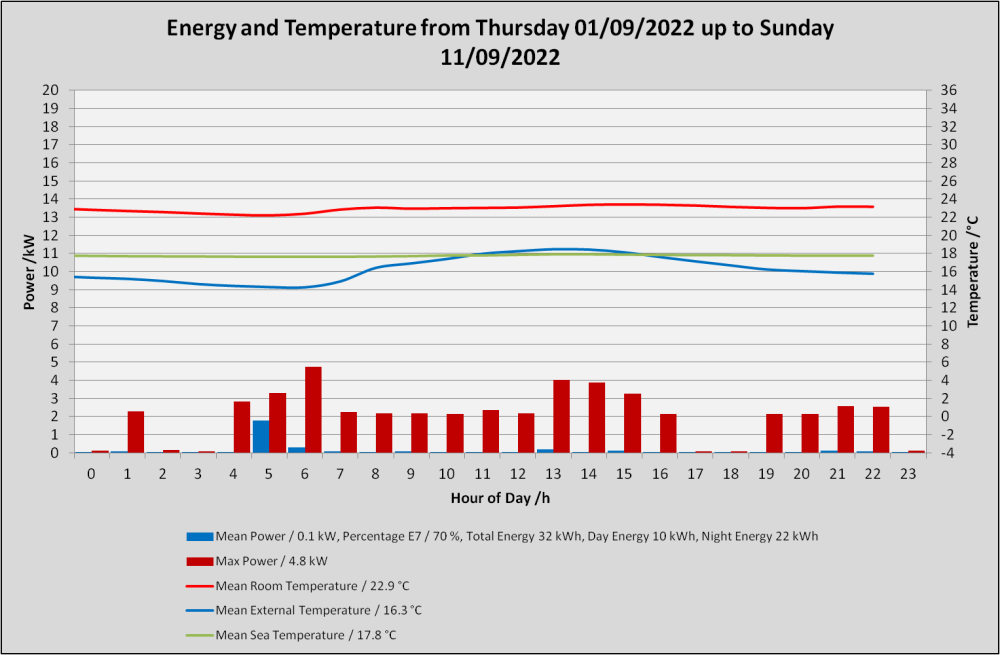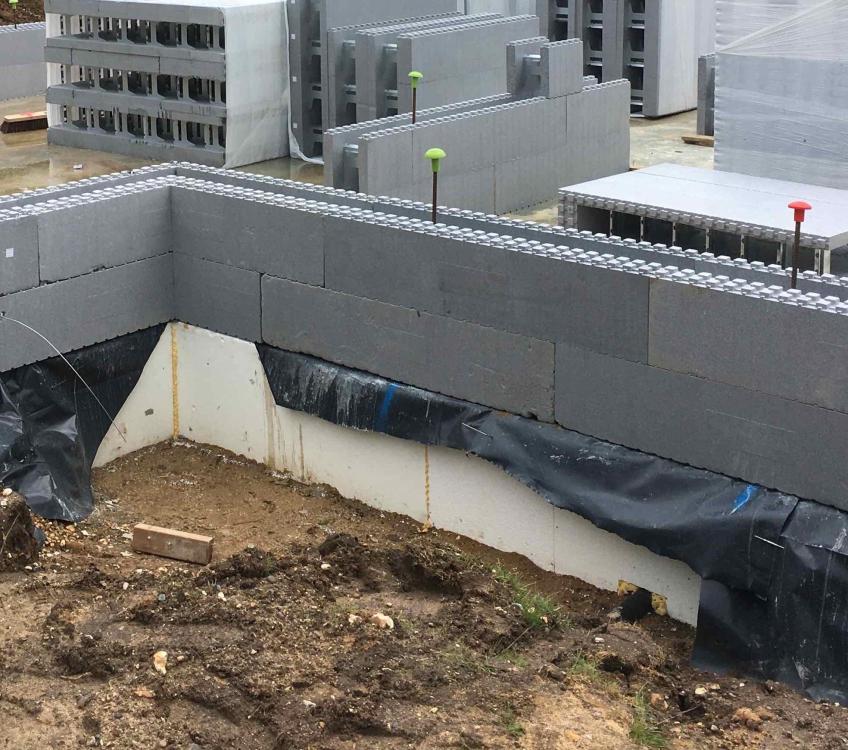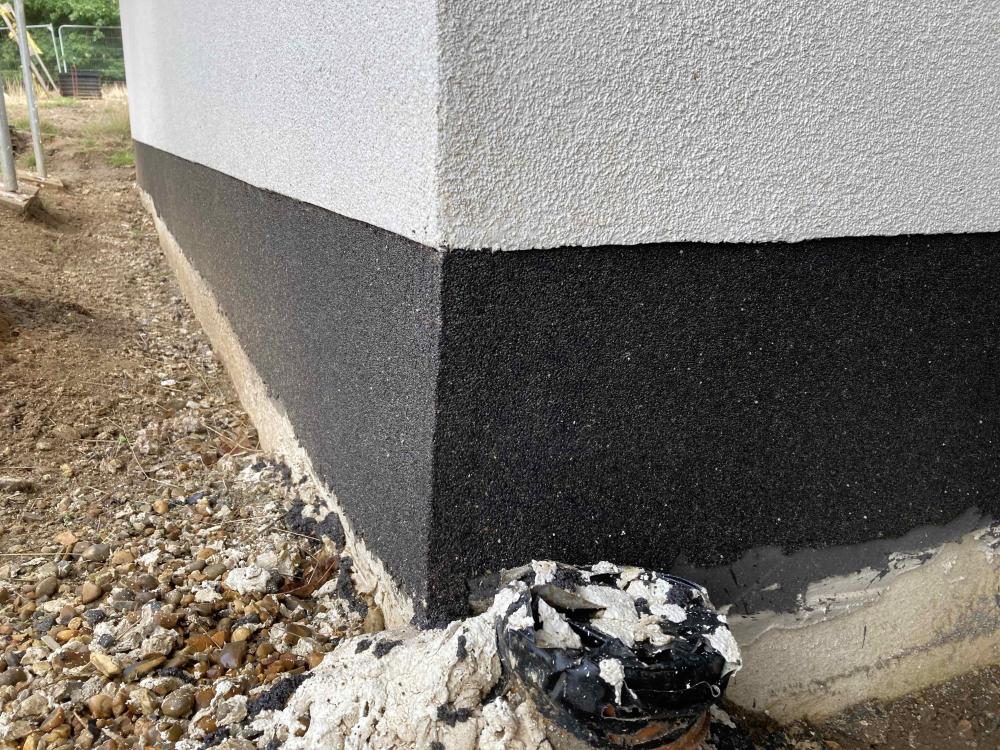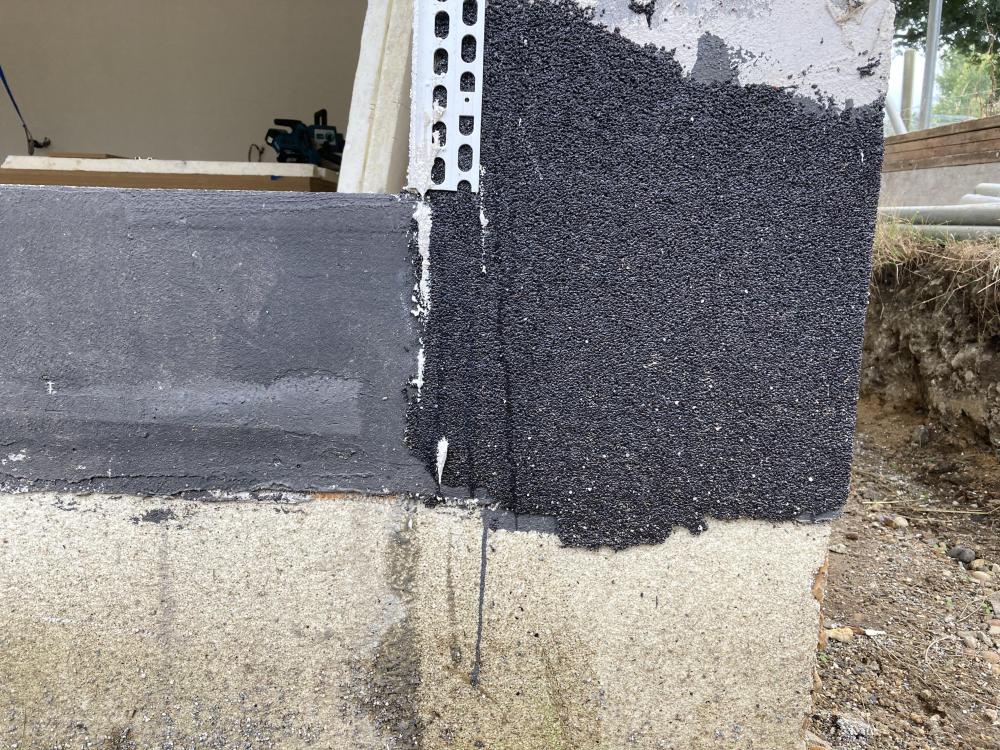Leaderboard
Popular Content
Showing content with the highest reputation on 09/13/22 in all areas
-
Good point. My idea was to foam just the bit that has failed as a temporary fix and it is only a small area to strip of the foam when you get a proper repair done.3 points
-
Looks to me like the corbelled brickwork leans on that timber and the timber has bowed a bit and the Mortor is soft. Try a straight edge against the wood and see if it is straight!. I would be tempted to diagonally brace that timber, rake out and re point the crack and surrounding brickwork. IMO it’s not going anywhere soon.3 points
-
I would wire it loop at switch so all junctions are accessible for alterations. If you think you might need a permanent L at the light fitting, use 3 core & earth from the switch to the light so you can have permanent L and switched L to the light.2 points
-
Like all macerators they are the work of the devil and only to be used when there is no other choice … and this is even worse as the unit has to come out to clear it - there is no top access2 points
-
I have the same timber set up in my loft-I’m inclined to think it was set up for the bricklayers to follow for the corbel,and provided a little stability during construction in the process.2 points
-
Hi. The gaps under the threshold are unacceptable and zero requirement for disabled access compliance. Complete and total bollocks, I’m afraid. Negligence in setting the entire door / frame unit in, to be sympathetic to your chosen floor covering is just poor practice, and again, shouldn’t be tolerated. Damp / water ingress from outdoors to inside is a fundamental installation error and that should have been mitigated BEFORE the unit was installed, and cannot practically be done retrospectively afaic. The unit needs to be removed and reinstalled, with those measures considered and executed correctly. This is utter nonsense, and simply fails to accept the problems which 100% defo exist here. The unit needs to come out, there is no other way. That will allow for the threshold height to be set to the internal finished floor level ( ffl ) according to what you prescribe that to be. Tell this muppet “no sale”.1 point
-
That room doesn’t need 2 stats - it needs one and you can’t really heat one end more than the other. In terms of the Tado controller, you should have the stat control the valve and then the valve control the pump and the boiler. That means the boiler fires independently if UFH or Rads request heat.1 point
-
Even easier @Nickfromwales Damon you can isolate the space heating there, drop some water out of the boiler service drain, and recharge the expansion vessel with a bicycle pump. I'd fill it to a slightly lower level as your system pressure when cold (e.g. 0.7 bar for 1 bar cold and 1.3 bar hot) so that when cold the rubber inside is slightly to one side of centre, and when hot it's slightly to the other side of centre. Take advice from an actual plumber though rather than the bodger perpetually recharging a slightly dog eared expansion vessel. 😉1 point
-
That would be my call, if the outside is not changed then who would know? why structural calcs? Crack on with a new lintel over double door if reqd. If you need/want to tell your neighbour then just say it’s temporary 🤷♂️1 point
-
I'd definitely allow for some form of network infrastructure - if you cannot afford or justify cabling at an early stage, at least put conduit in to allow cables to be pulled later - your electrical contractor is putting the network cabling in conduit - isn't he? I'd be careful with the whole wifi-access point on each floor - that is 2D thinking and frequently sub-optimal- Wifi signals radiate in all directions, up and down too - and can often pass through timber floors a lot easier than masonry walls - a central chimney stack made from engineering brick can easily cast a wifi-shadow across a portion of your home regardless of which floor your access points are on. I would also choose appliances and devices carefully as to favour the wired infrastructure rather than dumping everything onto wifi - the less fixed devices you have chattering across the airwaves the clearer they are for genuinely mobile equipment - bear in mind that unless you have significant isolation from your tech loving neighbours your house will be subjected to possible interference from all their devices too.1 point
-
Go into Benchmark and tell them Howdens have offered you a really good deal and they will beat it1 point
-
I’ve just heard of too many problems with any of the gypsum based stuff.1 point
-
1 point
-
That would be my preferred method but I'm a bit wobbly on ladders (legs are held together with screws) and the standing seam down the first floor makes it even worse.1 point
-
1 point
-
1 point
-
actually, only £128 when setting the country to UK. that's a great find and definitely something to consider. thanks @joth1 point
-
Difficult to tell but that crack appears to stop at floor level and stop above the timber so I don’t believe movement has occurred above or below that crack.1 point
-
Many companies use a private building control Siting that local Authority Building Control are a pain in the Arse (Code for thorough) For a few hundred pounds you can bring in your own BC Call your local planning office Give them your planning number and arrange a visit This will P your contractor off But it sounds like your past this point already1 point
-
If I remember correctly the “black” was added to plastic to stop UV deterioration. +1 that the water needs to be kept dark to stop “growth” in the water. You can get black IBC,s1 point
-
In a previous job I had to get rid of a dozen or so IBC'S that had gone brittle and got damaged. Not sure of timescales, but definitely several years rather than months, and I can only assume that was through weather and UV exposure. Google suggests a 10yr lifespan for an HDPE IBC, so I'd either cover them, or plan to replace if and when.1 point
-
We've had an IBC on an allotment for at least 6 years. The sides were wrapped with reed fencing/matting but top was left exposed. Not noticed any deterioration.1 point
-
Don't be tempted to get the whole roof sprayed with foam. Some adverts claim its a cure for slipped tiles but it just makes things harder to fix longer term.1 point
-
Seems reasonable but the bus cable length could get very long and I'd be worried about cross talk, especially if not using S/FTP individually screened cat6. DMX has similar daisy chain requirements (both are RS485 derived??) and there the preferred workaround is to use an signal regenerator/splitter. Looks like something similar maybe available for modbus? E.g. https://www.se.com/us/en/product/LU9GC3/modbus-splitter-block-10-rj45-and-1-screw-terminal-block/1 point
-
Just to add Just before we started our first build Our friends finished the “Forever home “ Then decided to sell after 18 months Bought a retrospective warranty But the purchasers lenders didn’t asked for it They seemed more concerned about him getting an indemnity for his two flat roofs As Temp has already stated Better to wait and see1 point
-
There will be buyers out there who will appreciate the house for what it is. You could offer to pay for a full building survey for example. We have friends who bought a brand builder built house that didn’t have warranty for example. They are serial house movers and cash buyers.1 point
-
We need a retrospective warranty to move our mortgage, we've been quoted between £3k and £7k by various companies.1 point
-
That’s in poor condition, as a temporary measure you could use expanding foam to ‘stick’ things in place and provide some support but you really need to look at a strip and re tile as a good storm could shake a lot of that loose.1 point
-
1 point
-
Plenty of window opening here for us so we get some creepy crawlies. Flies,I think they're cluster, seem to bash against the glass of closed windows until they die. Otherwise they get trapped inside the first seal of the window. Vacuum cleaner takes care of them. Happily bees and butterflies seem to be better at finding their way out again. I've never seen any moths, earwigs or woodlice. The spiders have come in the doors mostly I think. Don't mind them really, they're good tenants, don't bother with our food. Don't make annoying noises and help take care of other pests. Give it another month when all the doors and windows will be closed and there'll be nothing really. Theres no nice warm and moist areas for them to live. The usual cracks and holes where the heat of inside and dampness of outside meet don't exist. The stable dry and warm environment even in inaccessible areas just doesn't suit little creatures I think.1 point
-
1 point
-
We get a few insects in through open windows and doors. I know we have mice in the woods, I'm hoping they don't find the open doors.1 point
-
+1 to the mice issue. Always had the tenacious little ba$tards in previous houses, they’ll never get in here. Spiders and flies get in when a door is left open, spiders are humanly caught and released to the wild to continue their job of work on the outside. As for the flies, it’s chemical warfare for them.1 point
-
Yep, less bugs. As above, the only ones that get in are the ones you let in when doors and windows are open, and they don't last long. We let the occasional spider in when opening the bi-folds or French doors, but I think the internal environment is too dry for them to last more than a couple of days.1 point
-
Definitely less spiders etc, they only ever get in when a window is open. But the big one for me is NO MICE. Every house I have lived i before, with the usual air bricks and other means of ventilating cold roof spaces and cold floor voids has allowed mice to get in. particularly into a cold loft space. It was just something you accepted and dealt with with traps or poison. But the new air tight house with a warm roof has not had a single mouse in it ever. That is a way better result than fewer spiders.1 point
-
1 point
-
Less bugs by far, for us. We have fruit flies around the chilli plants, and occasional ant invasion, but otherwise bigger bugs (spiders and flies etc) can't get in, or die off quickly if they do as there's nothing to breed and feed off. YMMV1 point
-
1 point
-
1 point
-
We are the same, one heating season no issues. We are on a 100mm concrete screed. We had elevated humidity in the floor, so had to apply a liquid (epoxy) DPM prior to glueing the floor down.1 point
-
We went for engineered herringbone over a sand and cement screed with ufh in it. Works really well and looks great. You just need to prime the screed with a sealant I think, and obviously only do that once the screed is nice and dry. Check what the herringbone supplier’s recommendation is for max subfloorfloor temp. Ours was about 27, which appears to be fine for our purposes, although the minimum manifold temp is something like 35, by the time the water gets around and the heat percolates through the screed we were getting about 28 as a subfloor temp, but we took the 27C max with a pinch of salt.1 point
-
Whilst our master bedroom is upstairs, we have (as closely as possible) replicated this downstairs so that we can switch to ground floor living if/when it becomes necessary. We also have gone for wide doors everywhere, no thresholds internally (Karndean flooring throughout), flush thresholds on all external doors (including onto patio/deck), lowered kitchen worktops on handleless cupboards, no wall cupboards, eye-level (actually slightly lower than normal) ovens with slide and hide doors, a four burner hob with all four arranged in a single row so no need to reach across to back burners, midi height fridge and freezers (no point having fulĺ height if you can't reach the top shelves), inward opening windows with the handles positioned low on the frame, low tray walk in showers with low level shower controls, simple push button privacy locks on the bathroom doors and a fully open plan kitchen/dining/living space.1 point
-
0 points
-
yep absolutely !! Make sure you don’t do the pipes up tight either, and also wire it in with an extension lead …0 points
-
No guys ! . Have you not learnt ! . It requires skill and time . Me not do . Me want easy option . Me want less work not more .0 points
-
Can we just give Poles water, instead of money, to build our houses properly. BREXIT must be working.0 points
-
0 points








